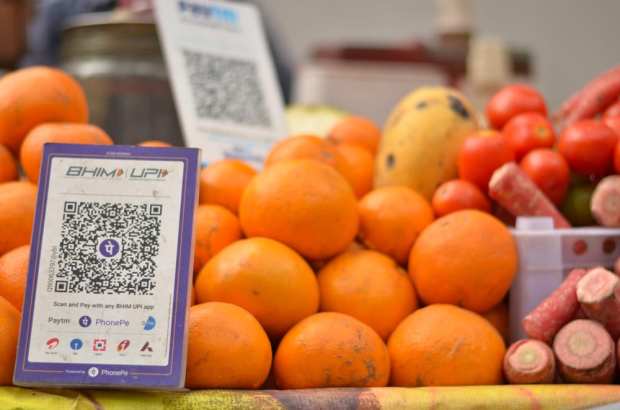PhonePe On What’s Driving The Rise Of Mobile Payments In India

The cash on delivery model in India is starting to change as more Indian consumers embrace digital alternatives amid the pandemic, says Karthik Raghupathy, head of strategy for digital wallet provider PhonePe. In this month’s Smarter Payments Tracker, Raghupathy discusses how offering streamlined mobile payment experiences can convert cash-loving shoppers and ease merchants’ headaches.
Companies must tailor their payments approaches to the norms and preferences of each market in which they intend to operate, and that means researching local habits as well as staying abreast of consumers’ and merchants’ changing transaction tastes.
Firms eyeing India will find that the pandemic has somewhat loosened cash’s long-established dominance in the country. Mobile apps are proving more important than ever in facilitating domestic sales between businesses and consumers in the nation, according to Karthik Raghupathy, head of business development and strategy at eCommerce payment system and digital wallet provider PhonePe. Raghupathy spoke with PYMNTS about the factors that are prompting businesses and consumers to adopt these services.
Demographic groups that have traditionally been slower to adopt payment apps, such as older or less-wealthy consumers, are now testing out these tools, and retailers are responding with new solutions. Some of the smallest businesses, like pushcarts selling fruits and vegetables, are now posting QR codes to facilitate app-based purchasing, for example, and more companies have started selling their goods and services via websites and mobile platforms.
“Even for all the rapid digital payment growth in India, it’s still largely a cash economy,” Raghupathy explained. “But what the pandemic has done is brought significant awareness and [willingness to try new methods] from users who typically have stayed away from digital payments.”
Merchants are also finding that they need to get online, he added.
“Partnering with digital payment players has become essential for [eCommerce and brick-and-mortar merchants]. Offline merchants almost see this as a necessity now,” he said. “Two years ago, it was more of a fancy. A year ago, it was starting to become the norm, and now it’s become an absolute essential commodity.”
Streamlining Merchant Settlement
Merchants generally want to reduce any obstacles to quickly collecting their funds, and the cash payments that have long been the norm in India often create more work for them. The effort they put into counting, managing and keeping track of paper bills makes digital payment alternatives appealing. These options can be especially helpful for eTailers seeking to move away from long-standing trends, such as consumers waiting until delivery to pay in cash. Switching to mobile services enables sellers to send transaction links to shoppers shortly before delivery to facilitate digital prepayment, Raghupathy explained.
“You can order something on your favorite eCommerce site and not pay, but instead pay cash when the item gets delivered,” he said. “But [for the merchant,] that comes with cash-handling costs and all the operational hassles that come with cash.”
Merchants around the globe are closely monitoring their revenue flows during the pandemic, and some may still appreciate the immediacy of cash payments despite the inconveniences that come with accepting physical currency. Mobile apps that leverage real-time payment rails could bridge this gap, however, by marrying the immediacy of cash payments with the convenience of digital transactions and instant fund settlement.
Payment platforms are gaining the most traction with small- to medium-sized merchants, Raghupathy said, as these players may struggle to allocate resources toward developing in-house software solutions and handling the requisite security needs. He said such businesses can often benefit from using third-party offerings that can quickly be integrated into their operations and rolled out.
“Whenever you have money flow, it’s quite technical,” he said. “When you think about a mid-sized or small merchant, the ability for someone … to give them a solution that’s out of the box — where they don’t have to think about money flow problems — is quite appealing. They all see an increasing need to be able to give frictionless payments … but they don’t want to design these solutions from scratch [because creating payment solutions] comes with a lot of responsibilities.”
Easing Consumer Payments
Payment methods that are popular among merchants will still fail to take off if consumers do not find them enticing, meaning businesses must adopt apps and solutions that are convenient for shoppers as well. Offerings that streamline the purchasing process and allow shoppers to select payment tools are especially likely to win over consumers, Raghupathy said.
Creating desirable experiences may entail offering consumers apps that enable them to pay with their choice of credit cards, debit cards, digital wallets or bank accounts. It also may require allowing them to set up automated purchasing options that reduce the number of steps they must take. Raghupathy explained that users could set up preferred payment methods that will automatically be used when they transact with merchants from which they frequently make purchases. Consumers may also want to authorize recurring payments for expenses like billing transactions so they can avoid worrying about choosing payment methods and meeting due dates.
Merchants must pay close attention to the payment tools and approaches that can make purchasing easier for customers and enable sellers to reduce their administrative burdens and improve cash flows. A close eye on shifting payment and technology trends in target markets can help retailers position themselves for success.

